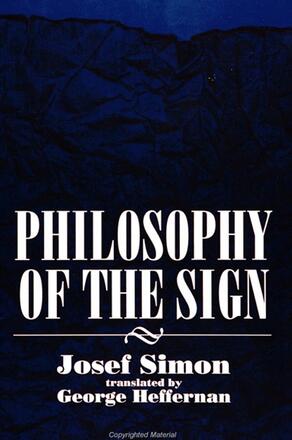
Philosophy of the Sign
Alternative formats available from:
This book presents a coherent philosophy of signs without postulating objects to which they refer or meanings which they express.
Description
In this book, Simon wields Ockham's razor like a scythe to argue historically and systematically for a coherent philosophy of the sign as sign with an unprecedented minimum of ontological and semantical commitments. Deconstructing Plato, Frege, and Husserl, he accounts for signs without positing the existence either of meanings which they express or of things to which they refer. Indeed, he shows that one cannot understand anything that is not a sign, so that one never gets to meanings without signs or things beyond signs.
This confinement of signers and signees to a network of signitive relationships with no possibility of escape to a metasignitive "reality" characterizes Simon's philosophy of the sign. He draws on an extraordinarily wide range of sources, from Classical to contemporary, from modern to postmodern, from Anglo-American analytic to Continental European, for example, Plato, Aristotle, Descartes, Leibniz, Hamann, Herder, Kant, von Humboldt, Hegel, Nietzsche, Peirce, Frege, Husserl, Wittgenstein, Heidegger, Levinas, Derrida, and Quine. A bonus is that this book provides insight into major developments in the contemporary German-speaking realm.
Josef Simon is a Professor in the Department of Philosophy at the University of Bonn. George Heffernan is Associate Professor in the Department of Philosophy at Merrimack College.